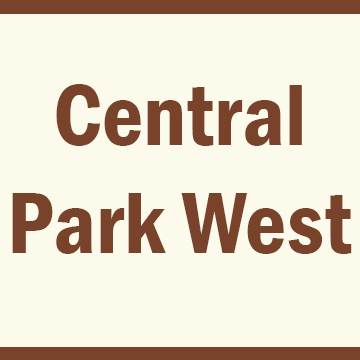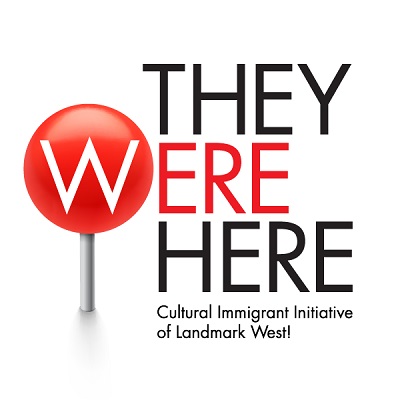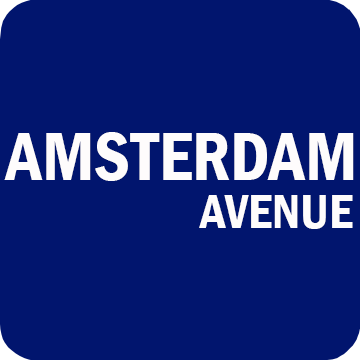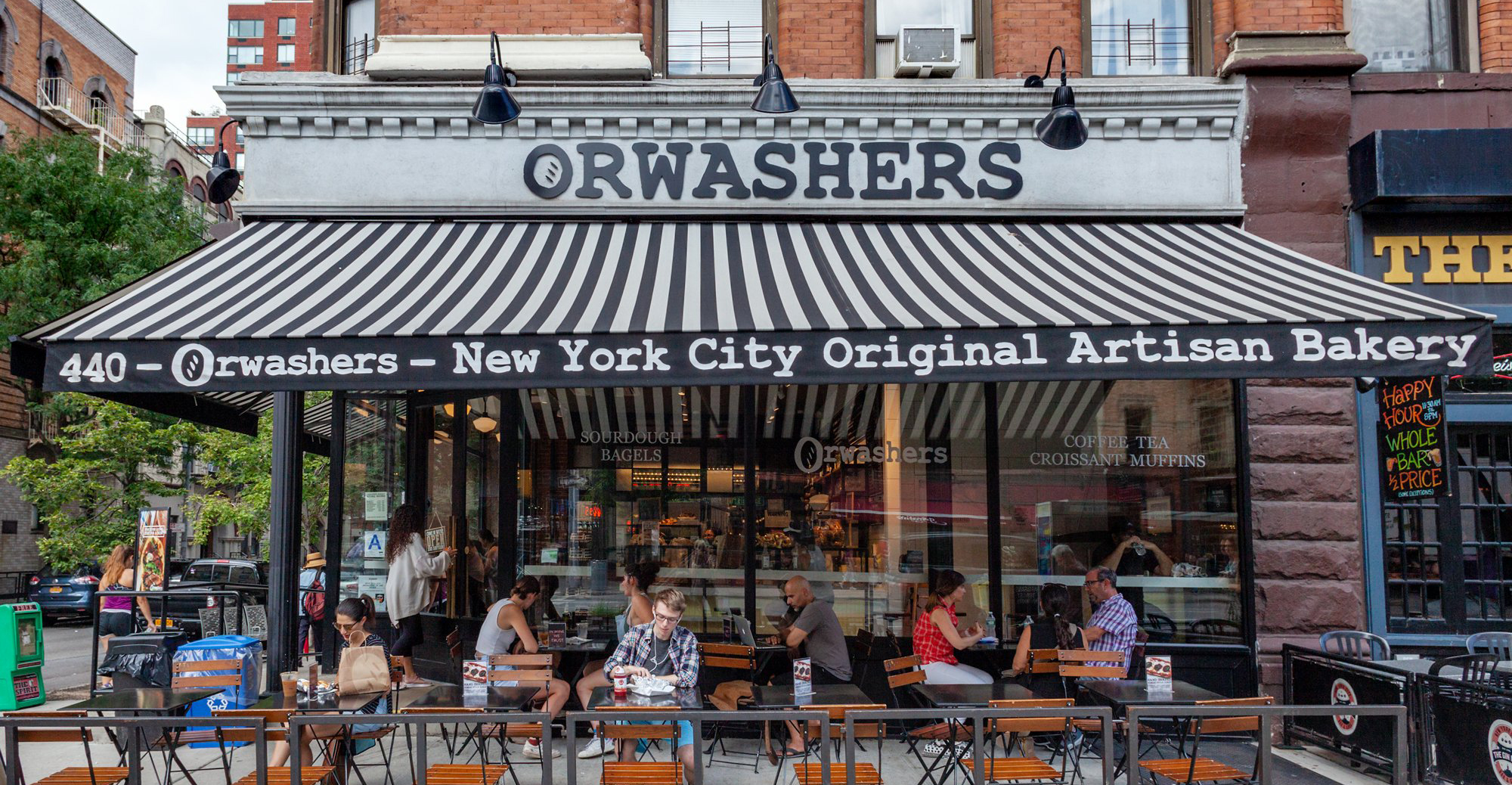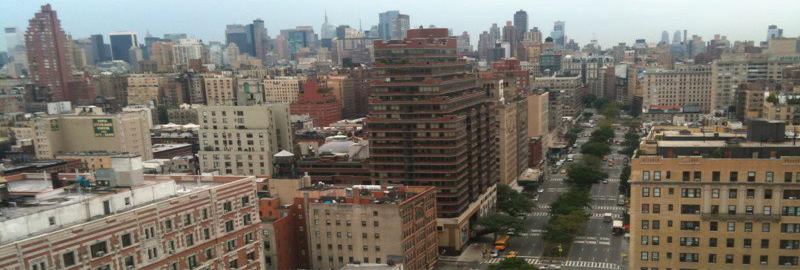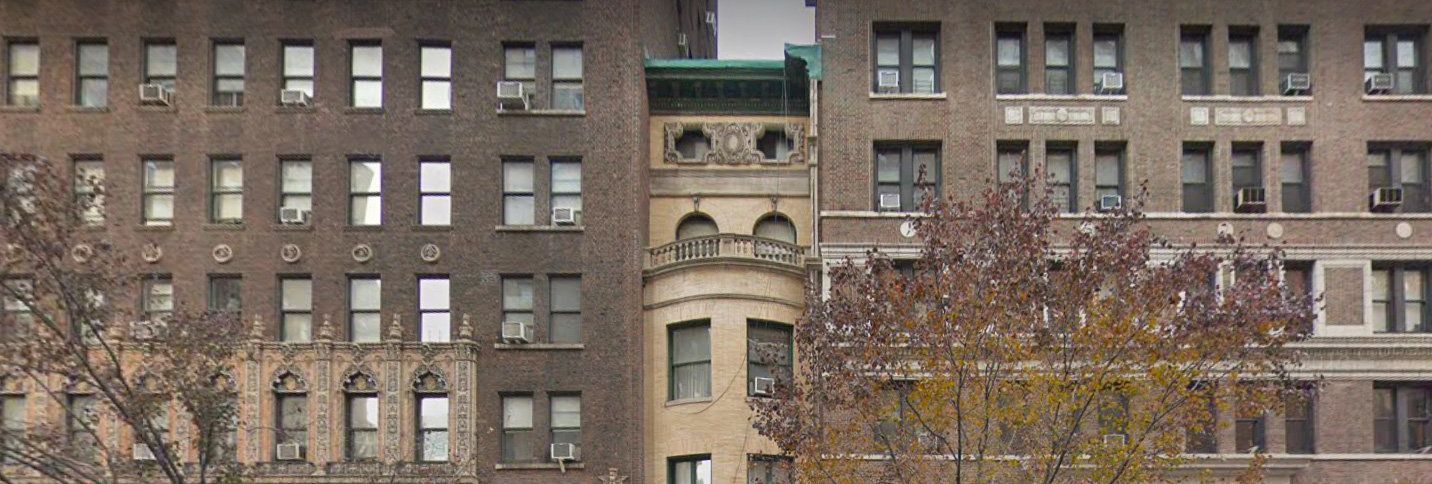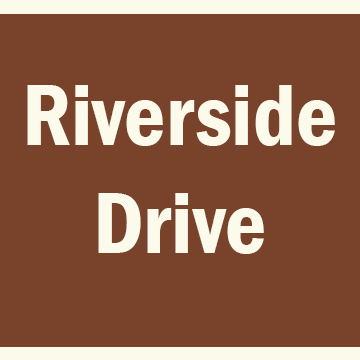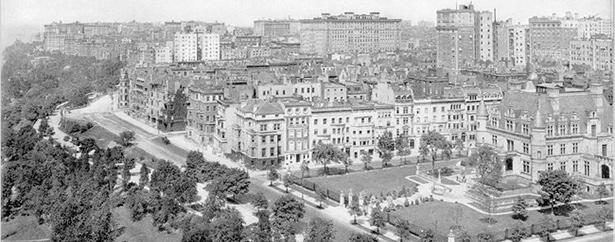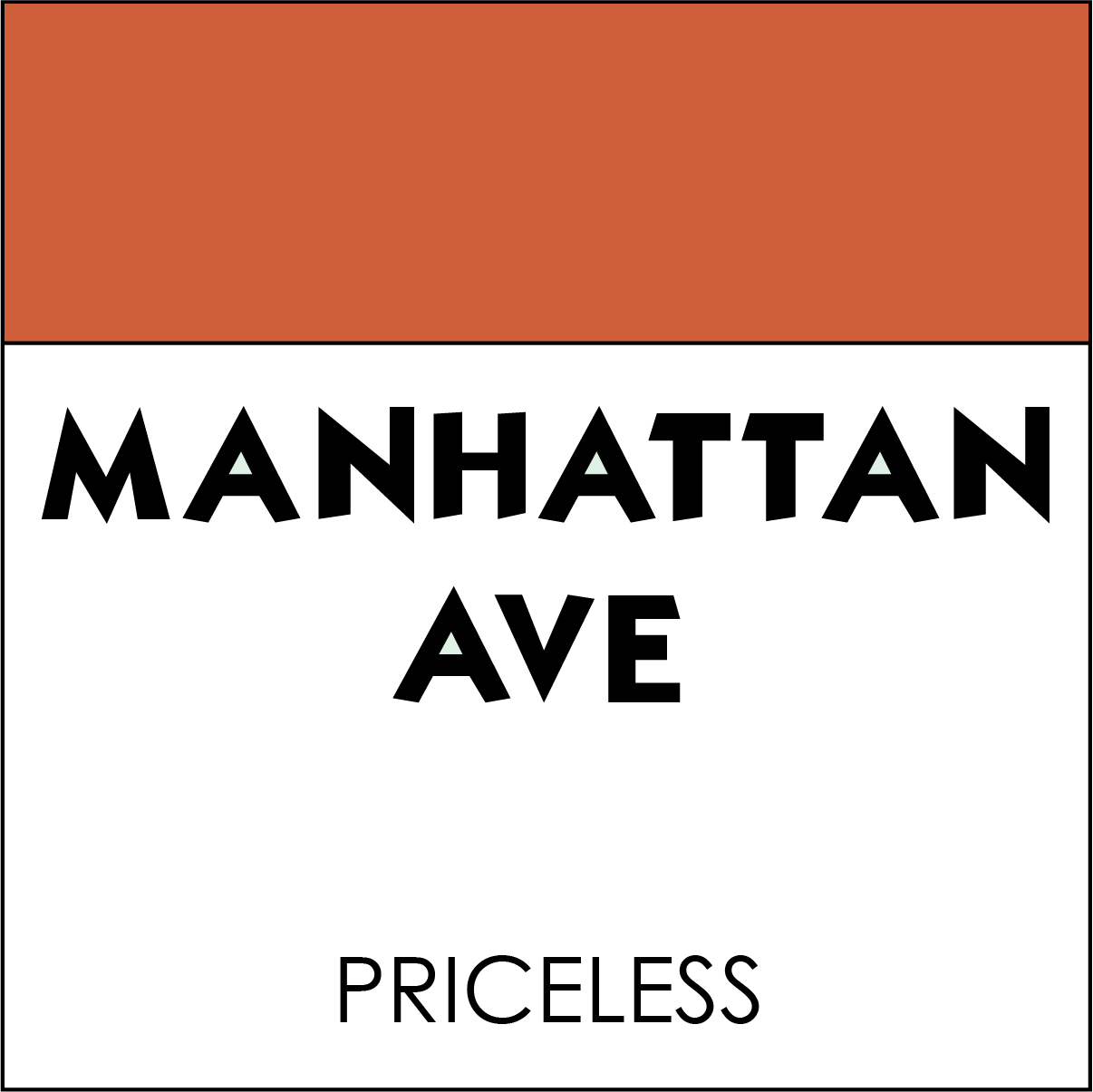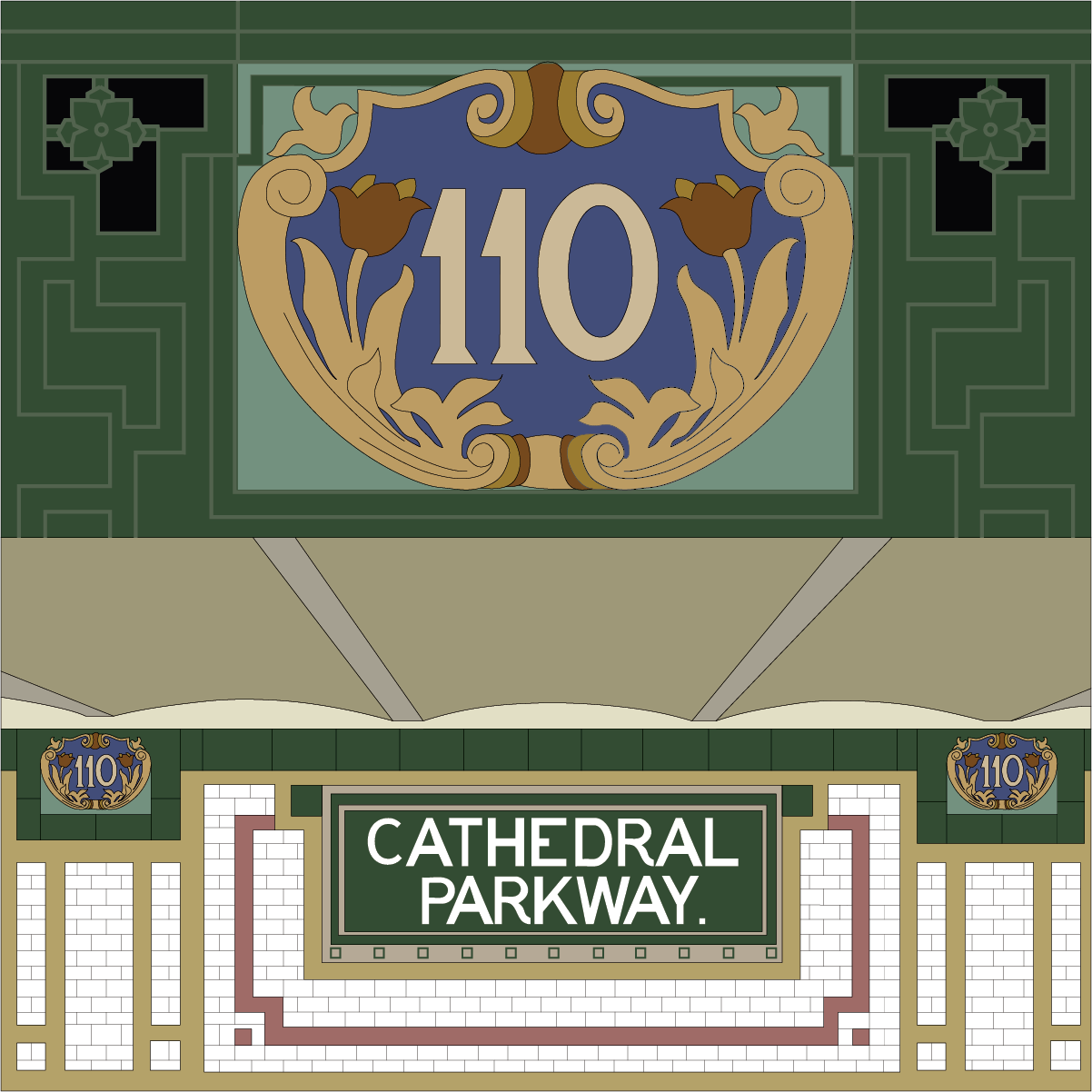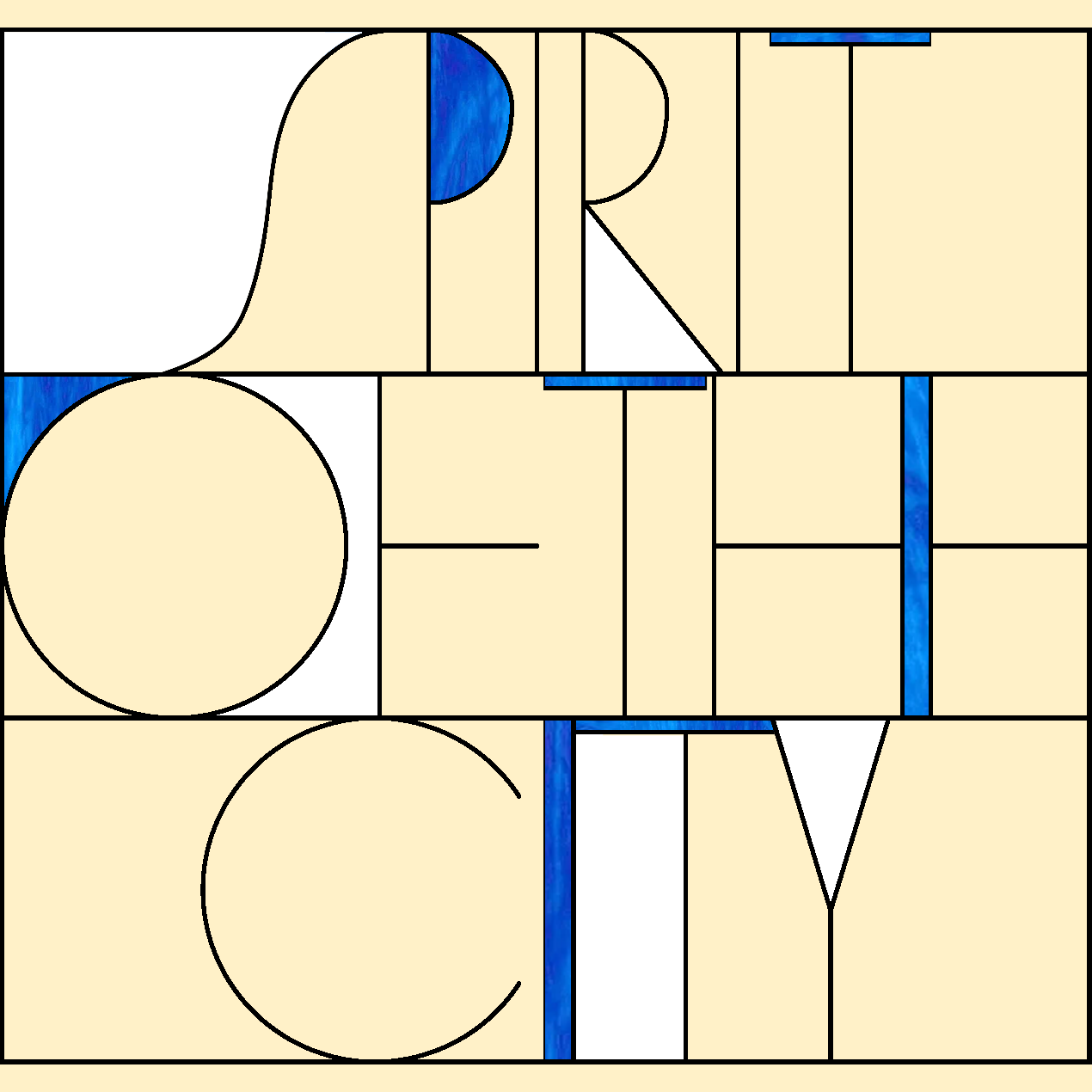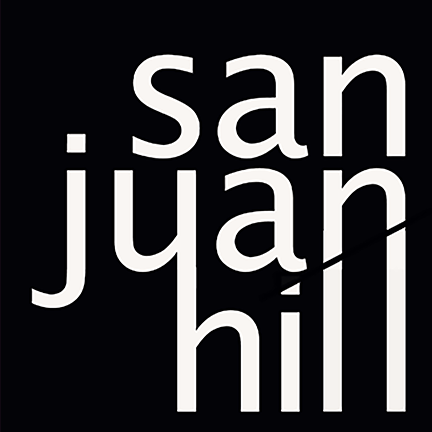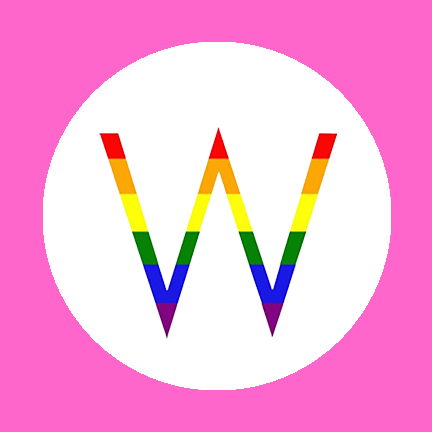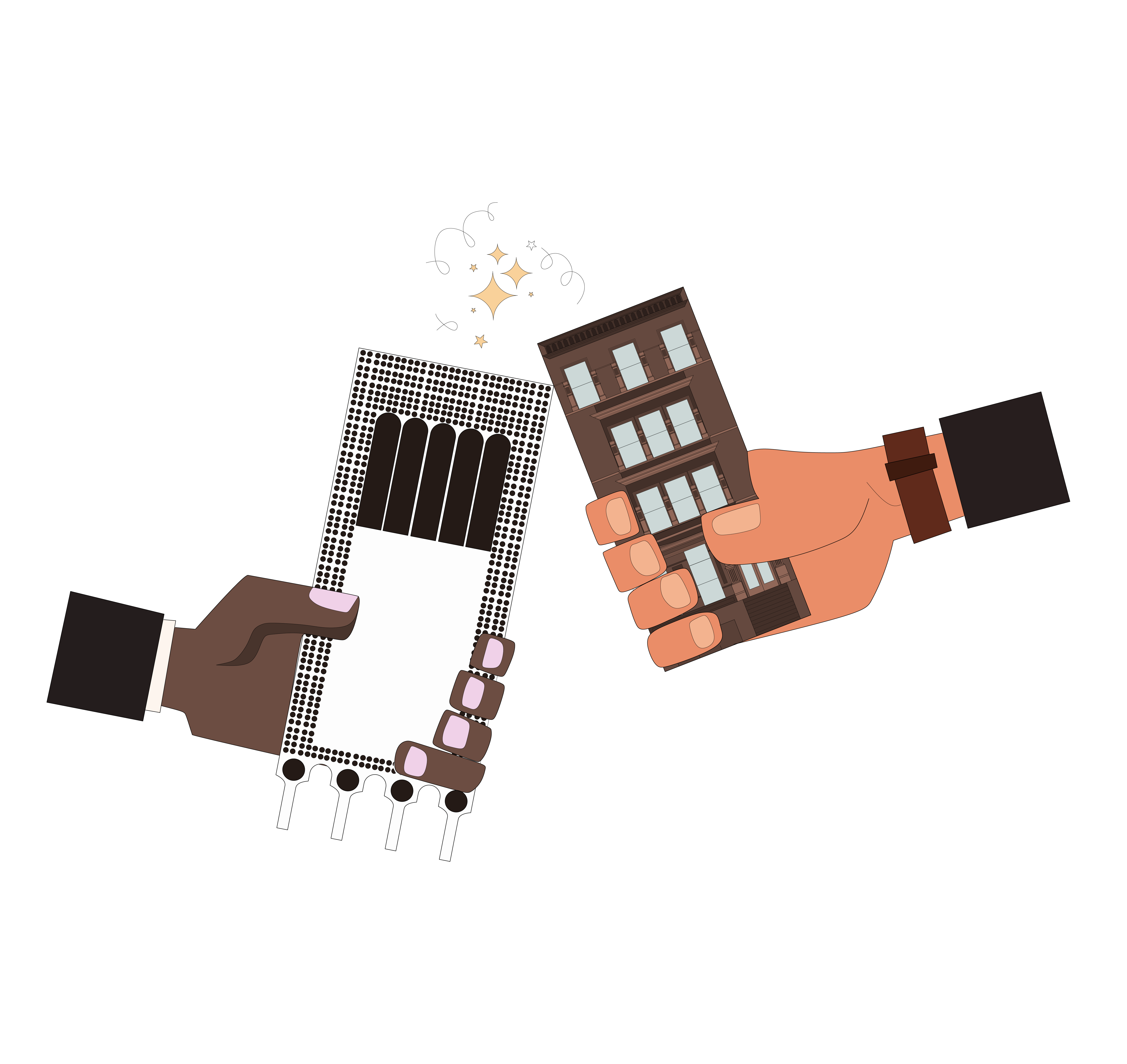
In 2019, LANDMARK WEST! began digging deeper into our neighborhood sites, featuring the social histories of landmarks along Columbus Avenue in an interactive map for a project called THEY WERE HERE. As that map filled in and expanded, the requests kept coming. 72Crosstown launched in 2021, and The Boulevard began in 2022, expanded with Boulevard Encore in 2024. We now make a point to prepare a history whenever a landmark is coming up for a public Certificate of Appropriateness. Today we have more than 600 posted histories. With 3,200 landmarks and nearly 6,000 buildings overall in our district, we will be at this for a while, but we welcome you to follow our progress and offer this key page to guide your explorations. Click the icons to search by Avenue, Street, Theme or Author. Happy reading!
25 Social Histories & 1 Interview
…along Central Park West
Central Park West
Central Park West was named for its location, at the western edge of Frederick Law Olmstead and Calvert Vaux‘s masterpiece Scenic Landmark. In 1883, Eighth Avenue was renamed Central Park West.
According to The Street Book: An Encyclopedia of Manhattan’s Street Names and Their Origins by Henry Moscow:
Formerly part of Eighth Avenue, Central Park West was renamed belated some years after completion of Central Park; like Amsterdam and West End avenues, among others, the boulevard was rebatpized for greater status. It already was, at 72nd Street, the site of the Dakota, built in 1884 and for many years the city’s most famous apartment house. (The Dakota, financed by Edward Clark of Singer Sewing Machine wealth, owes its designation to its location, so far from the heart of town in 1884 that wages likened the areas to the Dakotas.) Smaller apartment houses and a scattering of hotels began to rise before the turn of the century, but only in the early 1930’s did Central Park West assume its present look. Virtually unique among the city’s major thoroughfares, it has remained little changed for almost half a century. (36)
Read community voices about Central Park West from the New York Times.
97 Social Histories & 31 Interviews
…along Columbus Avenue
Columbus Avenue
Columbus Avenue was named for Christopher Columbus. In 1890, Ninth Avenue was renamed Columbus Avenue.
According to The Street Book: An Encyclopedia of Manhattan’s Street Names and Their Origins by Henry Moscow:
Ninth Avenue above 59th Street was renamed for the explorer in 1890, two years before the 400th Anniversary of his voyage to the Americas. But there was more behind the change than belated recognition for Columbus: above 59th Street, the avenue was residential and people who lived on it wanted it distinguished from the part occupied by trade. (40)
17 Social Histories, & 1 Interview
…along Amsterdam Avenue
Amsterdam Avenue
Amsterdam Avenue was named for Amsterdam in the Netherlands, native home to the City’s first European settlers. In 1890, Tenth Avenue was renamed Amsterdam Avenue.
According to The Street Book: An Encyclopedia of Manhattan’s Street Names and Their Origins by Henry Moscow:
Amsterdam Avenue was part of Tenth Avenue until 1890, when residents above 59th Street argued that their neighborhood would benefit by a change of name. The board of Alderman decided at first to call it Holland Avenue, but switched to Amsterdam just before they passed their resolution. The board noted that other name changes, such as that of Eleventh Avenue to West End Avenue, had “had a marked and beneficial effect on property” and added that “in the several petitions the signers regard the proposed change of name as second in importance only to the advantages of increased rapid transit. (22)
180 Social Histories, & 113 Interviews
…along Broadway
Broadway
Broadway was named for its width compared to the surrounding streets. In 1899 the Boulevard was renamed Broadway.
According to The Street Book: An Encyclopedia of Manhattan’s Street Names and Their Origins by Henry Moscow:
Named so because of its width, much greater in lower Manhattan in the city’s early days than it is now. Supposedly an Indian trail before the white man came, Broadway was called Heere Straat by the Dutch and Great George Street by the British. Until its entire 15 1/2-mile length was given a single name by law on February 14, 1899, Broadway from 59th Street to 155th Street was The Boulevard; from 155th to 157th streets the Boulevard Lafayette; from 157th to 170th Street it was Eleventh Avenue or The Boulevard again from 170th Street to Spuyten Duyvil it was Kingsbridge Road. (31)
…along West End Avenue
West End Avenue
West End Avenue was named for the entire neighborhood of its location. In 1880, Eleventh Avenue was renamed West End Avenue.
According to The Street Book: An Encyclopedia of Manhattan’s Street Names and Their Origins by Henry Moscow:
The Namesake: the city’s West End, as it was called, which was gaining prestige with the creation of Riverside Park. Until 1880, the street was part of Eleventh Avenue. The stretch from 72nd Street to 106th Street was renamed to make it sound classier (111)
16 Social Histories & 1 Interview
…along Riverside Drive
Riverside Drive
Riverside Drive was named for its location, at the eastern edge of Frederick Law Olmsted and Calvert Vaux‘s other UWS masterpiece Scenic Landmark.
According to The Street Book: An Encyclopedia of Manhattan’s Street Names and Their Origins by Henry Moscow:
As early as 1750, the bluffs overlooking the Hudson were becoming a fashionable suburb, with a few estates and mansions. The De Lancey family (see Delancy Street) had a house at what is now 86th Street and the Drive until 1777, when, one cold autumn night, American troops burned it down because of the the De Lanceys’ Troy sympathies. (The women of the family fled in their nightgowns and one of them took shelter in a dog kennel.) Construction of Riverside Park was proposed in 1865 in a pamphlet by William R. Martin and a law authorizing it was passed in Albany in 1867. (Before Home Rule, cities in New York State were beholden to the legislature for everything.). William Marcy Tweed, then commissioner of public works, was among the earliest to buy lots nearby, and the area became a prized neighborhood. Land for the park was acquired in 1872, at a cost of $6,174,120.80. Frederic Law Olmsted, the creator of Central Park and Prospect Park, designed Riverside Park by March 29, 1873. The park was completed as far north as 129th Street by 1885 and ten years later The New York Times editorialized: “There is no boulevard in all the world that competes with Riverside Drive in natural beauty.” The park was extended by stages, with the purchases of additional land in 1891, 1899, 1900, 1901, and 1902 and the drive grew with the park, incorporating an already existing boulevard above 155th Street. (36)
…along Manhattan Avenue
Manhattan Avenue
Manhattan Avenue was named for its borough. Manhattan Avenue was first proposed in 1868, and begins at West 100th Street and runs north to 125th Street before it merges into St. Nicholas Avenue. Intended as “New Avenue” when planned in 1872-1873, Manhattan Avenue did not gain its known name until 1884.
According to The Street Book: An Encyclopedia of Manhattan’s Street Names and Their Origins by Henry Moscow:
Manhattan is an Indian name for which supposed translations abound. Among the more fanciful is “the place where we all got drunk,” which refers to an alleged drinking party Henry Hudson arranged fro Indian shipboard visitors. But the carefully kept log of Hudson’s Half Moon makes no mention of this. Another interpretation is “People of the Whirlpool”–a reference, no doubt, to Hell Gate. More persuasive is this: in the language of the Delaware Indians, manah meant “island” and atin meant “hill”. The island’s Indians called themselves Manahatta. (74)
116 Social Histories & 85 Interviews
…along West 72nd Street
West 72nd Street
West 72nd Street was mapped as part of the 1811 Commissioner’s plan. Designated as a “Park Block” it was designed to be a wide street aligning to the Women’s Gate, Terrace Drive, and the Inventors Gate in Central Park.
…along Cathedral Parkway
Cathedral Parkway
Cathedral Parkway was named for the Cathedral of St. John the Divine.
According to The Street Book: An Encyclopedia of Manhattan’s Street Names and Their Origins by Henry Moscow:
Cathedral Parkway was created by the widening of 110th Street between Seventh Avenue and Riverside Park. The work was authorized in April 1891; the cornerstone of the cathedral was laid Dec. 27, 1892.. (22)
70 Social Histories…and 3 interviews
…of neighborhood religious buildings
Spirit of the City
There are over 70 identified houses of worship in our district. Often designed to stand out and uplift, these structures deserve special attention.
80 Social Histories & 4 Oral Histories
…in the former San Juan Hill neighborhood
San Juan Hill
Various accounts describe San Juan Hill’s neighborhood of tenements and factories as “Hells Kitchen North,” “Battle Row,” “10th Ave. Hill,” “Clinton Hill,” “The Tenderloin,” a “Red Light District,” (among even less flattering names), and most commonly, “Slum.”
7 Social Histories with 5 Interviews
…featuring LGBT Histories
LGBT Histories
The NYC LGBT Historic Sites Project identifies and “documents historic places connected to lesbian, gay, bisexual, and transgender people in New York City and tells the often untold story of their influence on American history and culture.” LW! has cross-listed the NYC LGBT Historic Sites on the UWS with our own social histories to represent and celebrate these accomplishments.
Histories by Sarah Bean Apmann
Histories by Claudie Benjamin
Histories by Kelly Carroll
Histories by Max Chavez
Histories by Megan Fitzpatrick
Histories by Jessica Larson
Histories by Tom Miller
Histories by Kate Taylor-Hasty

